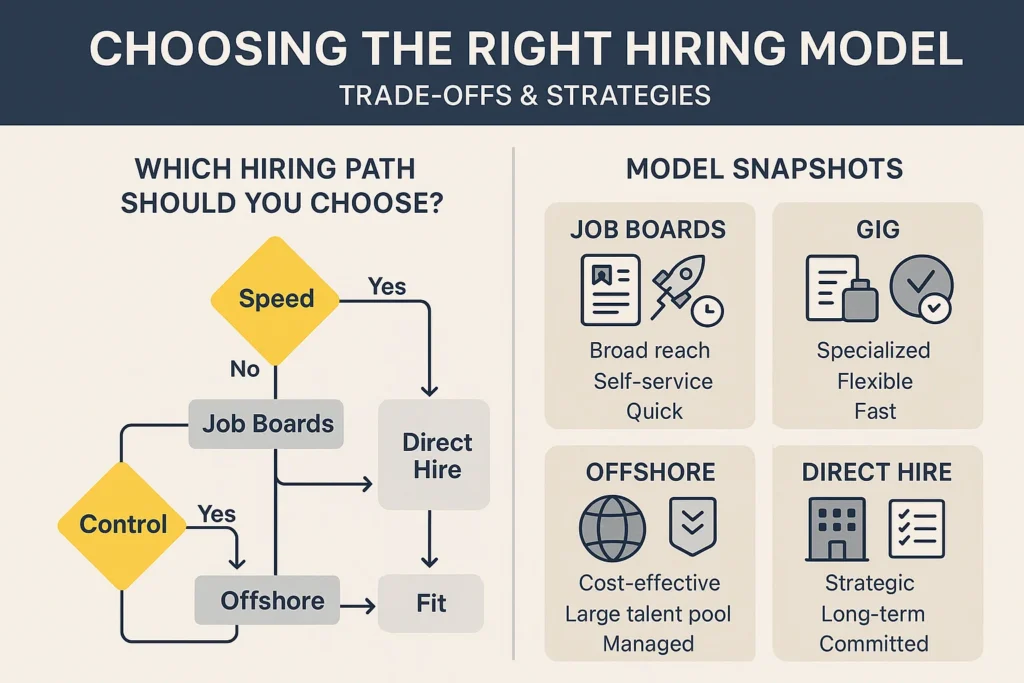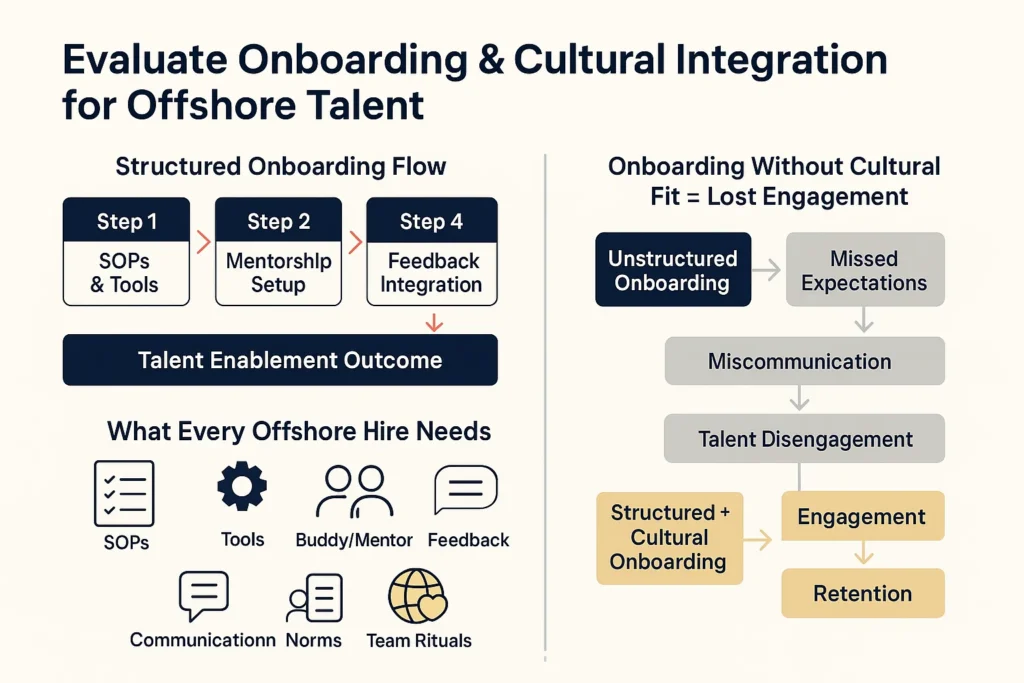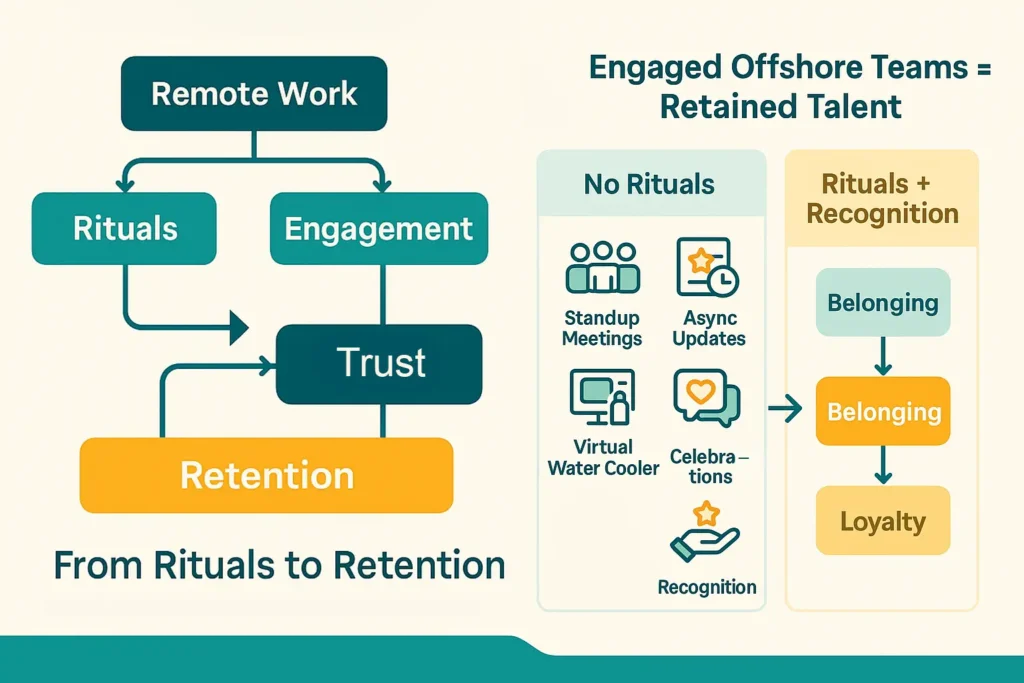cheap but woolly vetting profile tinders.
The Ultimate Guide for Businesses in the Global Economy
As the ability to transmit data across the world becomes more prevalent, Offshore Recruitment Sourcing has become less of a trend but increasingly a strategic deployment for those wanting to grow, have flexibility, and have a cost-effective model. But if offshore hiring is going to become a long-term success story, it all comes down to one thing: a great vetting process.
Vetting is not simply a matter of checking boxes. It’s reeling in a group of individuals that match your business vision, values, and velocity. Without it, you’ll end up with poor productivity, a high turnover, and culture conflicts — downsides that can wind up being more expensive than the cost savings.
Below is a step-by-step vetting process to help guarantee that your offshore hire becomes a long-term asset, and not a short-term regret.
Before resumes or calls, begin with clarity. The vetting process you use should also reflect your business strategy, company culture, and your long-term road map. Are you creating an agile product team? A 24/7 customer support crew? A scalable content engine?
It’s tempting to write off strategic hiring as simply finding people fast, but it’s not just about hiring people: It’s about creating and maintaining a talent ecosystem that supports retention, performance, and scalability. Offshore candidates must be assessed for the jobs they would do today and the places they would grow into tomorrow.

Do you go through job boards, offshore recruitment agencies, freelance platforms, or go directly?
There are hiring paths that you should know and comes with trade-offs:
cheap but woolly vetting profile tinders.
good for short-term needs, little brand loyalty
vetted pipelines, but more expensive
high control, but time-intensive
Best offshore staffing companies offer comprehensive screening, local compliance, and effortless scalability. Choose based on your need for speed, cost, control, and quality.
Offshore hiring isn’t only a question of skill — it’s a question of connection.Testing English fluency, both verbal and written is very generic. But you need to look beyond grammar — how clearly do they express thoughts, grasp nuances and ask questions?
Include soft skill and cultural adaptability testing. Do they get Western work norms? Can they work in your time zone, is async communication ok, and do they have fast feedback loops? This is critical especially in customer-facing or collaborative positions.
Raw skills count — but so does learning agility. A way to understand how quickly a candidate can adapt is to use aptitude tests, logical reasoning, and cognitive ability quizzes.
Then dive into role-specific tests. Live Coding Problems: Developers should solve problems in real-time. Marketers might build funnels. Project managers may have questions related to stakeholder scenarios.
When you hire staff offshore, you need to validate both the potential of the candidate as well as their performance.

Forget hypothetical puzzles. Have them work on actual real-world work that somewhat resembles what they’ll actually be doing. Ask a writer to write a blog post. Designer needs to recreate a landing page. A sales representative needs to respond to the mock objections.
Then try scenario-based interviews. How would they resolve conflicts on a distributed team? How do they rank assignments that are due around the same time?
This mirrors the actual rhythm and competitiveness of their work environment.
Vetting is never complete without a look in the rearview mirror. Reach out to former managers, look at portfolios and check credentials. For agency candidates, check the reliability and transparency of the agency and verify if it provides contractual data security clauses.
Trust is an issue in the offshore recruitment agencies. You’re not just hiring a person — you’re entrusting your time, data, and brand with them.

Vetting does not stop at the offer letter.
A good offshore hire needs a support system to flourish. Develop and execute a structured onboarding plan, which will include:
Layer on cultural onboarding: company values, communication styles, and rituals. A couple of days of clarity right now saves months of disconnect in the future.

The first 30–60 days tell a story.
Track indicators like:
If you’re constantly reiterating and getting resists and seeing a lack of engagement, don’t ignore the red flags. Course-correct early.

Remote doesn’t mean disconnected.
Those daily standups, weekly wins tracking, async updates, and emotional check-ins mean a lot. Show respect for work-life boundaries, don’t micromanage, and make room for virtual water cooler time.
Celebrate small wins. Recognize effort. Invest in team-building across borders. This is how you take offshore recruitment and turn it into offshore retention.
Offshore candidates’ vetting is an art and a science. It’s not just about reviewing resumes — it’s about developing lasting relationships with professionals around the world who become a part of your team.
When executed properly, offshore recruitment sourcing delivers unparalleled agility, diversity, and cost benefits. But the groundwork has to be strong: strategy alignment, gentle screening, real-world testing, and ongoing help.
With the right process, the right tools, and the right people, you’re not outsourcing. You’re upgrading.
Join thousands of businesses leveraging offshore staffing to scale their operations globally
Expand effortlessly with My Offshore Employees - access top 1% offshore talent starting at just $3/hr or $600/month per FTE. No hidden fees, no compromises on quality. Your offshore employees work exclusively for you - ensuring focus, transparency, and real-time visibility into your projects. We combine smart automation and proven industry experience to deliver higher productivity, fewer errors, and tailor-made solutions for your business growth.
© 2025. All Rights Reserved.